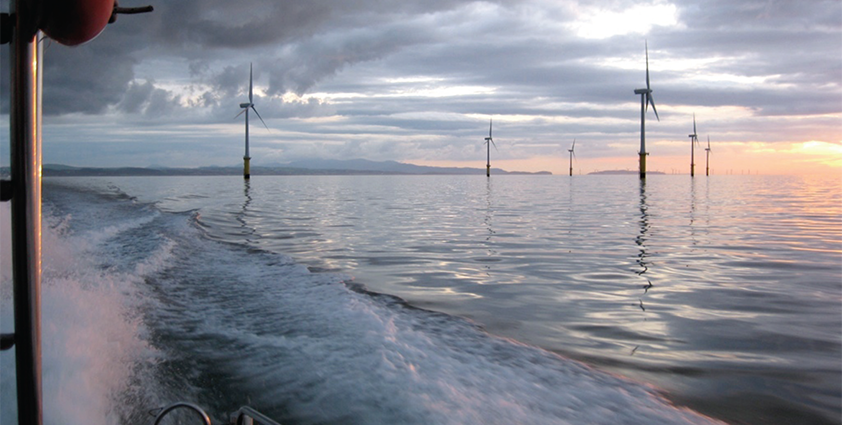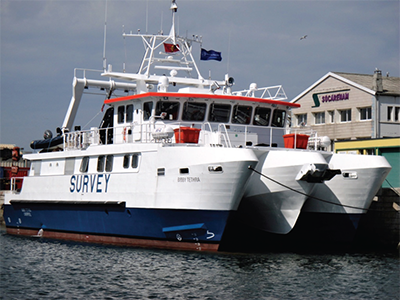
Osiris Projects: Pioneering Nearshore Survey Solutions in UK and Europe’s Oil Sector
Building a better future
The Carbon Trust recently suggested marine energy could bring an additional £76 billion into the UK economy over the next 40 years, generating over 68,000 jobs.
Although the UK is arguably leading the way in terms of wave and tidal technology, significant investment is required to drive the industry forward through innovation and confirm its industry position. Key to achieving this goal is not only supporting developers, but also reinforcing the supply chain to maintain momentum and reduce production limiting factors.
Osiris Hydrographic & Geophysical Projects Ltd (Osiris Projects) is a nearshore survey contractor with a long standing reputation in the UK/European oil and gas sector. The company holds a term contract with Shell E&P and has a wide range of regular clients such as BHP Billiton, EOG Resources, Centrica, ENi and many more. The company is unique in that it has also worked on the majority of the UK Round 1 & 2 offshore wind farm sites beginning with Shell Flats in 2001, a number of Round 3 sites as well as Scottish license areas. As well as offshore wind developments, Osiris Projects has undertaken numerous wave and tidal site surveys including Pentland Firth, Ramsey Sound and the Channel Islands; some of the most challenging nearshore working environments where tidal flow rates can reach double figures.
Tethra
Regular investment has been necessary for Osiris Projects to continue to remain commercially competitive and add value, as technological advances within the field have quickened over the past few years. The company has recently expanded its fleet of purpose built survey vessels by taking delivery of a specialist DP survey vessel ‘Bibby Tethra.’ A semi-SWATH (Small Waterplane Area Twin Hull) catamaran, Tethra is expected to offer a multi-role platform that can effectively serve the gap between the smaller inshore and coastal vessels and the larger, costly offshore vessels. The semi-SWATH concept positions the vessel’s main buoyancy deeper below the water line, reducing the surface area and minimising the effect of passing waves at both fast and slow speeds. This delivers a stability profile similar to a mono-hull vessel over twice her size. This increased stability allows enhanced high resolution data acquisition in terms of precision, increased working windows during sampling and ROV operations, reduced exposure to weather delays and ultimately, improved effectiveness and efficiency at a significantly reduced cost when compared against a traditional offshore vessel.
 Offshore wind
Offshore wind
The profile of the UK offshore wind sector has grown steadily through recent years and this has been in synergy with the continuing up-scaling of projects from Round 1 sites, 20-30 turbines in size, through Round 2 and 2.5 and culminating in Round 3 sites; some of which cover a physical area half the size of Wales. Osiris Projects has built a wealth of experience in offshore wind, having completed 50,000km of geophysical data acquisition and interpretation between 2001 and 2011. During this time, the firm has been involved in almost every major wind farm development at various stages from reconnaissance, pre-construction, detailed engineering study, UXO detection, installation support, post-construction to continual monitoring surveys and remediation investigations.
As a niche company operating in both the offshore wind and oil and gas sectors it is apparent that there is a lot of pressure on suitably skilled personnel and specialist vessels/equipment. Osiris Projects believes the offshore wind industry still has a lot to learn from the established oil and gas sector, stating: “Marine renewables, as a whole, are starting to realise how critical it is to find the balance between the commercial pressures of development and the added value that can be achieved by drawing on the knowledge and practical expertise available locally within the oil and gas market.”
Wave and tidal
It has been estimated offshore wind technology is roughly ten years ahead of wave and tidal technology, and in addition to engineering and logistical issues, lessons can be learnt from other elements of the process. These include project financing and management, links to education establishments, development of industry-related skills, marketing to gain critical public support and the evolution of industry networks. RenewableUK is committed to driving this change, hosting regular conferences, exhibitions and networking events for professionals within the industry. The Crown Estate is, naturally, heavily involved with the aims of attracting significant investment to the sector and encouraging major players to commit to development. With Pentland Firth, Scotland, being described as the ‘Saudi Arabia’ of tidal power capable of generating up to 10GW, it is well placed to capitalise on its competencies developed through its extensive offshore and onshore wind developments. Regarding the ongoing developments Osiris Projects comments; “Having surveyed a range of UK wave and tidal sites from the northern tip of Scotland to the Channel Islands, it is evident each has a unique tidal regime and each will present a significant engineering challenge. But the UK has a unique resource available which will make the developments viable.”
HSE issues
The development of the offshore renewables industry in the UK has been more than a technical challenge for many large firms. Major developers have had to translate their existing systems and approaches to safety into a relatively new field. These developers traditionally come from either a land based discipline or from an international market place, in either case the documentation and practical applications of HSE matters needed adapting in line with the best practise approach pioneered in the UK and oil and gas sector itself. This is one element where the global influence of the oil and gas sector has been embraced and is being implemented constantly.
Future
Looking forward, the critical challenges to the marine renewable sector can only be overcome through widespread industry support and investment, not only in technology and research but also in developing skills and competencies. Focus on core business strengths is critical to provide the level of service required, competitively. Osiris Projects looks forward to contributing to the positioning of the UK as a global leader in renewable energy.
Osiris Projects